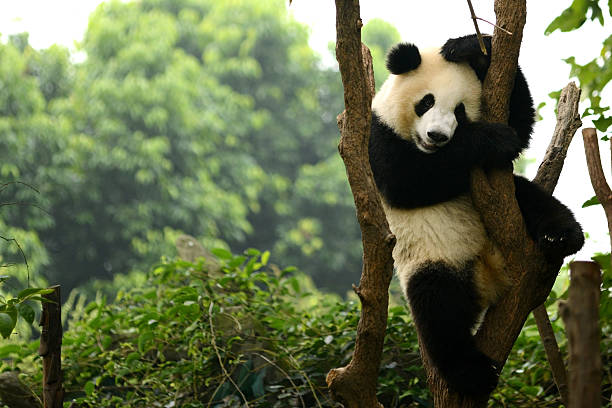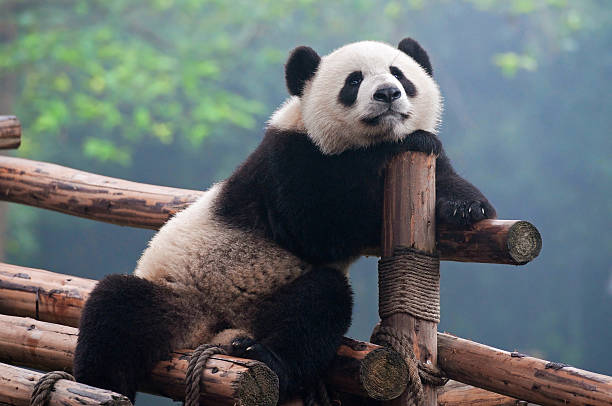
Pandas are among the most beloved and iconic creatures in the world, with their striking black and white fur and kind disposition. These charming critters have won the hearts of people all across the world and have become synonymous with conservation efforts. We will go into the intriguing world of pandas in this 1500-word paper, diving into their physical attributes, habitat, diet, conservation status, and the need to protect these gentle giants.

An Overview of Pandas
Pandas are a distinct species of bear native to China, formally known as Ailuropoda melanoleuca. They are easily identified by their remarkable black-and-white coloring, which gives them the impression of a living, breathing teddy bear

Characteristics Physical
- The Classic Black and White Fur
Pandas have thick, insulating fur that is mostly white, with black spots around their eyes, ears, shoulders, and limbs. This coloring is thought to be an adaptation for camouflage in their snowy, mountainous environment.
- Bamboo Adaptations
Pandas have particular adaptations for their herbivorous diet, including a thumb-like feature that aids with bamboo grasping. Their powerful jaw muscles and molar teeth are built to process fibrous plant material.
- Dimensions and Structure
Panda bears are huge bears, with males measuring 85 to 125 kilograms (187 to 276 pounds) and females somewhat smaller. Their robust physique and broad chest reflect their herbivorous diet.



Distribution and Habitat

Pandas are found in central China’s hilly regions, primarily in the provinces of Sichuan, Shaanxi, and Gansu. They live at elevations ranging from 1,200 to 4,100 meters (3,900 to 13,500 feet) above sea level in temperate forests with extensive bamboo undergrowth.
Diet and Feeding Patterns
- Bamboo Professionals – Pandas are obligate bamboo feeders, with bamboo accounting for more than 99% of their diet. They eat a range of bamboo species, preferring young, fragile stalks when they can find them. Their digestive system has evolved to extract nutrients from bamboo, which is a difficult task due to its high fiber content.
- Carnivorous Behavior Is Limited – Although pandas are usually herbivores, they do exhibit carnivorous behavior on occasion, devouring small mammals or birds. This behavior is more widespread in wild pandas than in captive pandas.

Social Organization and Behavior
Pandas are primarily solitary creatures, and their behavior varies from person to individual. Their home ranges are marked with scent markers to create territory, albeit these territories may overlap with those of other pandas.
The Reproduction of Cubs
Season of Mating
Pandas have a short, well-defined mating season, usually in the spring, when they gather for reproduction. Female pandas are only receptive for a few days a year.
The Mother-Cub Bond
Female pandas typically give birth to one to two babies at a time in late summer. A mother panda’s attachment to her offspring is strong, with the mother providing care and protection for the cub’s first few years of life.
Status of Conservation
- Status of Vulnerability – The International Union for Conservation of Nature (IUCN) has designated pandas as vulnerable. Their populations have been jeopardized as a result of habitat loss caused by deforestation, human activity, and climate change.
- Conservation Initiatives – Conservation efforts are critical for the survival of pandas. To foster coexistence with pandas in their natural habitats, efforts include habitat protection, captive breeding programs, research, and public awareness campaigns.
- Stories of Success – Conservation efforts in China have had some success, with panda numbers maintaining or rising in some areas. Conservation accomplishments include the creation of panda reserves and the release of captive-born pandas into the wild.
The Global Conservation Symbol
Panda bears have emerged as a global emblem of wildlife conservation. Their endearing look, along with the severity of their conservation requirements, has earned considerable attention and support for conservation initiatives worldwide.












